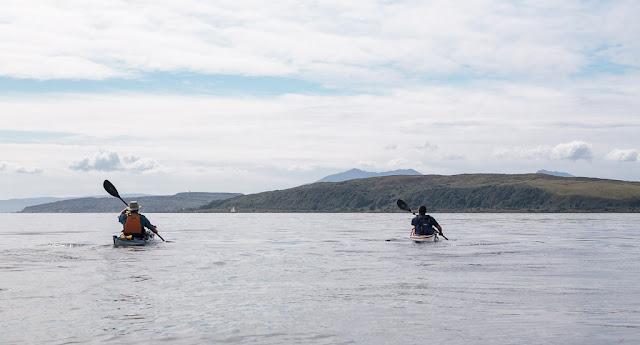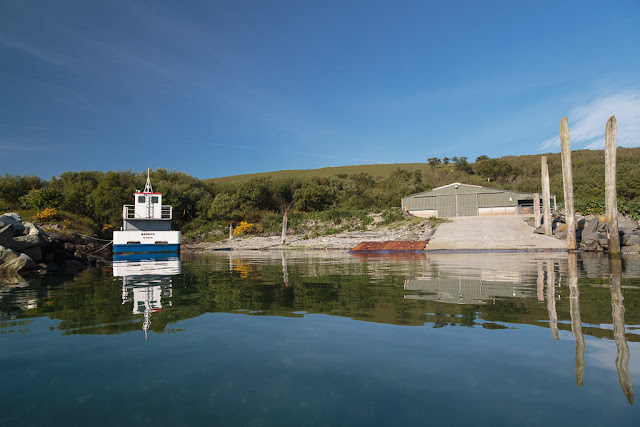It has been a particularly windy and mostly wet summer here...
...on the west coast of Scotland.
...fun in a whole variety of...
...conditions and in a variety of...
...craft even including a return to...
...windsurfing after a gap of 6.5 years due to my dislocating knees.
I am not interested in sea kayak camping in such weather though so it was with great pleasure that Ian, Mike and I saw a brief weather window open on Monday and Tuesday last week.
So we met at Largs at 1300 hours and spent a little time fitting Ian's new Flat Earth Trade Wind 80 sail to his kayak.
We set off for Little Cumbrae island in a flat calm.
We met the beautifully restored wooden gaff rigged cutter Islay. She was built in 1936 by Cooper of Conyer in Kent. Her construction is of teak on oak so she should be around for many more years. She certainly was not going any where fast and her sails were shaking with the gentle motion of the boat.
We set off across the Tan unsure whether to pass the north or south of the Little Cumbrae island.
In the end a little NW breeze got up so we paddle sailed across...
...from the Ayrshire coast towards the south of the island passing several porpoises on the way.
Passing the Little Cumbrae castle, it was too good an opportunity to miss a...
...stop for first luncheon.





























































